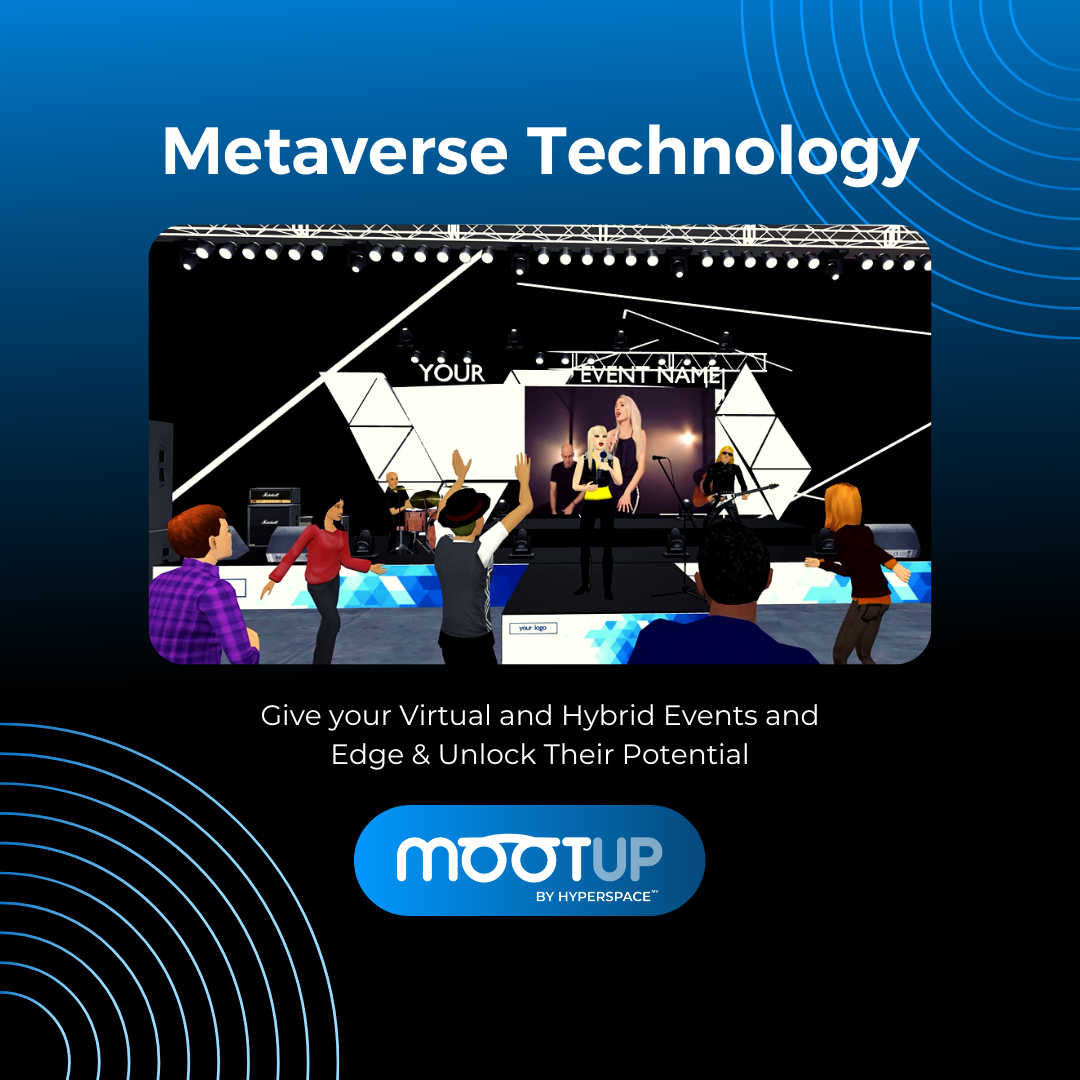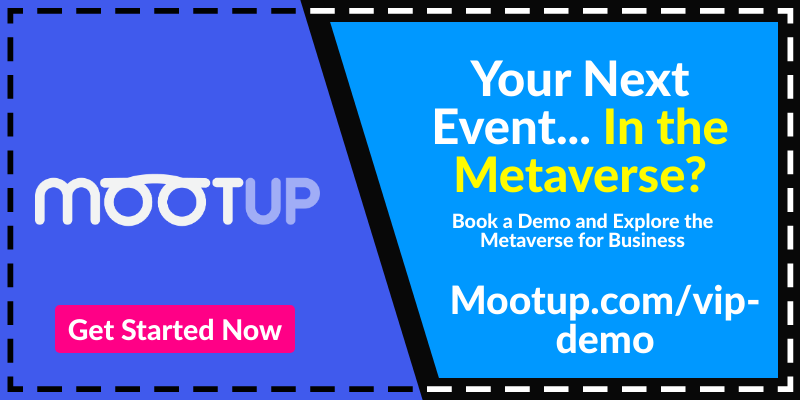The event landscape is transforming, and virtual events play a major role in creating immersive and stimulating participant experiences. To ensure your virtual events reach their full potential, this blog post will provide strategies and best practices for the virtual event stage and designing an immersive experience.
From pre-production planning to attendee engagement, we’ll discuss how selecting the right platform for the virtual event stage and designing an engaging agenda contribute significantly to a successful virtual event. We’ll also explore interactive elements such as polls or Q&A sessions that can be incorporated into your virtual stage design.
Lastly, we’ll touch upon promotion strategies tailored specifically for virtual events – including email marketing campaigns targeting specific audience segments and leveraging social media networks alongside swag bags for enhanced promotional efforts. Stay tuned as we navigate through these essential aspects of center-stage virtual events.
Table of Contents:
- Pre-Production and Planning for Virtual Event Stages
- Selecting the right platform for your virtual conference stage
- Designing an engaging agenda with keynotes and multi-session content
- Engaging Attendees Through Interactive Elements
- Promotion Strategies for Virtual Events
- Frequently Asked Questions Virtual Event Stage
- Conclusion
Pre-Production and Planning for Virtual Event Stages
To create a successful virtual event, marketers must pay equal care and attention to three stages: pre-production, lead generation, signing up attendees, and determining the event’s format and reach. This includes selecting appropriate platforms like Hopin that offer features tailored to sponsors’ needs while ensuring attendees enjoy content worldwide in their native languages.
Selecting the right platform for your virtual conference stage
Finding the perfect platform is crucial in delivering an engaging experience on your virtual event stage. When choosing a platform, consider factors such as:
- User-friendliness – A simple interface ensures smooth navigation by both organizers and attendees.
- Customization options – The ability to personalize branding elements will make your event stand out from competitors.
- Integration capabilities – Seamless integration with other tools like CRM systems or marketing automation software can streamline processes during planning stages.
- Pricing structure – Choose a pricing model that aligns with your budget without compromising essential features needed for success at events of various sizes/scope levels (e.g., small webinars vs. large conferences).
Designing an engaging agenda with keynotes and multi-session content
An exciting agenda sets the tone for any successful virtual conference. To keep audiences engaged throughout presentations on your virtual event stage design:
- Create compelling keynote sessions: Invite industry leaders who can share valuable insights relevant to target audience interests; this helps build credibility while providing thought-provoking discussions among participants during Q&A portions following talks themselves.
- Incorporate panel discussions or fireside chats: These formats encourage interaction between speakers and attendees, fostering a sense of community among participants who may be joining from various locations worldwide.
- Offer multiple tracks or breakout sessions: Cater to diverse interests by offering parallel sessions on different topics; this allows attendees to choose content most relevant to their needs while providing opportunities for networking with like-minded individuals during breaks in-between presentations.
In addition, consider incorporating MootUp, a no-code platform that enables you to produce and host virtual and hybrid events in the Metaverse. This innovative solution can help elevate your virtual event stage design by creating immersive experiences beyond traditional video conferencing platforms for attendees.
Planning for a virtual event stage requires careful consideration and attention to detail. The next step is engaging attendees through interactive elements, which can help make your event more memorable and enjoyable.
Key Takeaway:
A no-code platform is being developed to create and host virtual and hybrid events in the Metaverse. This endeavor aimsThis endeavor aims to construct a virtual event arena, enabling users to assemble captivating experiences without having any programming expertise.
Engaging Attendees Through Interactive Elements
Keeping audiences engaged during virtual events is crucial; interactive elements such as polls or Q&A sessions can help maintain interest throughout presentations. Additionally, sending out reminders leading up-to-event dates builds anticipation among registered participants. Platforms like BlueJeans offer high-tech features encouraging engagement during events through live polling options enabling real-time feedback collection from participants.
Incorporating Polls or Q&A Sessions into Your Virtual Event Stage Design
To enhance audience interaction on your virtual event stage, consider incorporating polls and Q&A sessions in your agenda. These tools keep attendees engaged and provide valuable insights for speakers and organizers alike. Here are some tips to effectively integrate these interactive elements:
- Create relevant poll questions that encourage thoughtful responses from the audience.
- Schedule regular intervals for polls and Q&As throughout the event to break up content-heavy segments.
- Promote active participation by offering incentives such as prizes or exclusive access to additional resources.
- Use a platform like MootUp that supports seamless integration of these interactive tools within the virtual conference stage environment.
Utilizing Reminders to Build Anticipation Before the Event
A well-timed reminder can go a long way in ensuring maximum attendance at your virtual event. You build excitement while keeping potential attendees informed about important updates while reducing no-show rates. Consider implementing these strategies when crafting reminder messages:
- Email reminders: Send personalized emails highlighting key details about the upcoming event, including speaker lineups, session topics, and any special offers for early registrants.
- Push notifications: Leverage mobile app or browser-based push notifications to remind attendees of the event’s start time and provide a direct link to join.
- Social media updates: Share regular updates on your channels, tagging speakers and sponsors while using relevant hashtags for increased visibility. You can also create countdown posts leading up-to-event dates, building anticipation among followers.
Incorporating interactive elements like polls and Q&A sessions into your virtual event stage design is essential for maintaining audience engagement throughout the event. By utilizing reminders effectively, you can build anticipation before the event begins, ensuring maximum attendance and participation from registered participants. Platforms like MootUp offer seamless integration of these features within their no-code platform designed specifically for hosting virtual events in the Metaverse.
.png)
By incorporating interactive elements such as polls and Q&A sessions into your virtual event stage design, you can create a more engaging experience for attendees. Now let’s move on to exploring effective promotion strategies that will help maximize the reach of your virtual events.
Key Takeaway:
A no-code platform is being developed to create and host virtual and hybrid events in the Metaverse. The topic is designing a virtual event stage, an essential element of these events.
Promotion Strategies for Virtual Events
Effective promotion plays an essential role in driving demand for virtual events. By leveraging various marketing strategies, event organizers can increase registrations and create buzz around their virtual conference stage. This section will discuss two key promotional tactics: email marketing campaigns targeting specific audience segments and utilizing social media networks along with swag bags to enhance your efforts.
Effective Email Marketing Campaigns Targeting Specific Audience Segments
Email marketing is a powerful tool that can significantly boost registration numbers if executed effectively. To maximize the impact of your campaign, consider segmenting your target audience based on factors such as job title, industry, or location. This enables you to tailor content offerings relevant to each group and improve overall engagement rates.
- Create personalized subject lines: Craft attention-grabbing subject lines that resonate with recipients by addressing their needs or interests directly related to the virtual event stage.
- A/B test different elements: Experiment with various email components (e.g., headlines, images) to determine which combinations yield higher open and click-through rates among targeted segments.
- Monitor performance metrics: Keep track of important KPIs like open rate, click-through rate (CTR), conversion rate (CVR), etc., allowing adjustments when necessary during ongoing campaigns.
Utilizing Social Media Networks and Swag Bags to Enhance Promotion Efforts
Beyond email marketing campaigns, digital advertising across multiple channels can also help generate interest in your virtual event stage design. Social media platforms offer numerous opportunities to promote events while engaging potential attendees through interactive posts or ads tailored specifically to them.
Consider implementing the following social media strategies:
- Create a unique event hashtag: Encourage attendees to share their experiences and thoughts on your virtual conference stage using a dedicated hashtag, fostering engagement and increasing visibility.
- Leverage influencers or speakers: Collaborate with industry experts or well-known personalities who can help promote your event through their networks, amplifying reach and credibility.
In addition to digital promotion efforts, sending out swag bags before events begin provides tangible connections between organizers and attendees beyond screen interactions alone. Swag items such as branded merchandise or exclusive content related to the virtual event stage design can create excitement among registered participants while reinforcing brand identity.
Promotion is crucial for any successful virtual event; employing effective email marketing campaigns targeting specific audience segments, leveraging social media networks, and incorporating swag bags will enhance promotional efforts surrounding your virtual event stage.

Virtual event technology typically includes a range of features and functionalities that replicate the experience of attending an in-person event, such as virtual meeting rooms, live streaming capabilities, live event insights virtual events eliminate interactive chat and Q&A, virtual exhibit halls, networking opportunities, polls and surveys, and analytics for tracking virtual event planning and participant engagement.
Tips for Seamless Execution of Virtual Conferences
- The event experience was enhanced with virtual aspects embedded into the complete event experience, leveraging virtual meetings and virtual trade shows to engage attendees and create a memorable guest experience.
- Event organizers are applying event strategies to plan successful virtual conferences and hybrid events as the events industry seeks innovative ways to adapt to the changing landscape of physical and virtual events.
- Event planners well-managed the event day, utilizing virtual DJ play and virtual releases to engage attendees and promote the event while ensuring a seamless guest experience.
- The events industry is exploring virtual trade shows as a means of event promotion, leveraging virtual aspects to create engaging event strategies that can enhance attendee engagement and overall event success.
- Hybrid events are gaining popularity as in-person events resume, with virtual aspects embedded to create a dynamic event strategy that engages attendees physically and virtually, creating a unique and memorable event experience.
Key Takeaway:
A no-code platform is being developed to create and host virtual and hybrid events in the Metaverse. The discussion topic is designing a virtual event stage that can be used for such events, using idioms and colloquialisms where necessary.
Frequently Asked Questions Virtual Event Stage
What features are available for a virtual event stage?
A virtual event stage typically offers features like live streaming, pre-recorded content playback, interactive elements like polls and Q&A sessions, customizable branding and design options, real-time analytics tracking, networking opportunities through chat rooms or video calls, and integration with third-party applications. These features help create an engaging experience for virtual event technology attendees.
The events agency ensured great pre-event communication and planning stages, leading to a successful virtual event where attendees felt involved and engaged, utilizing video conferencing tools.
The events agency managed the company events, creating a great event experience for attendees and leveraging video conferencing tools to engage participants and make guests feel involved in the event brand.
Through effective pre-event communication and planning stages, the events agency facilitated engaging company events using video conferencing tools to make attendees feel involved and connected, leading to a successful virtual event.
How can I customize the look and feel of my virtual event stage?
To customize your virtual event stage’s appearance, choose a center stage virtual events platform that allows you to modify the layout, colors, fonts, images or videos used in the background. Some event brand platforms also offer templates to streamline this process. Additionally, consider events industry seeks and incorporating your brand logo and theme throughout the design to maintain consistency across all promotional materials.
Are there any security measures in place to protect my virtual event stage?
Yes. Virtual events often include security measures such as password protection or secure access codes for entry; encryption during data transmission; firewalls protecting servers hosting the platform; monitoring tools detecting suspicious activity; GDPR compliance ensuring data privacy; and role-based permissions controlling user access levels within the platform.
Is it possible to stream live video on my virtual event stage?
Absolutely. Live streaming is a key feature of many modern-day virtual events stages. Platforms usually support high-quality video broadcasting from multiple sources simultaneously (e.g., speakers’ webcams), allowing participants to enjoy seamless presentations without lagging issues or buffering delays.
Can I integrate third-party applications with my virtual event stage?
Most definitely. Many platforms allow integrations with popular third-party apps like CRM systems (e.g., Salesforce), marketing automation tools (e.g., Mailchimp), social media platforms (e.g., Twitter, LinkedIn), and more. This helps streamline your event management process by automating tasks such as data collection or attendee engagement tracking.
Event promotion played a key role in driving attendee participation, leveraging various marketing channels and strategies to create buzz and generate excitement leading up to the event day.
The event day was well-coordinated, with meticulous planning and execution by event organizers, ensuring smooth operations, engaging activities, and a memorable experience for all attendees.
A virtual release added an element of excitement and anticipation to the event, creating buzz and engagement among participants and enhancing the overall event experience.
Conclusion
As virtual events become increasingly popular, having a well-designed virtual event stage is essential for success. By carefully crafting a stage incorporating engaging elements, you can create an immersive experience for your virtual event attendees and event planners. By following best practices, such as promoting your stage ahead of time and leveraging technology to enhance engagement during the event, you’ll be able to ensure that your virtual event runs smoothly and successfully on your custom-built virtual event stage.
Empower your Metaverse with unparalleled versatility using MootUp‘s browser-based platform, providing seamless access from smartphones, tablets, laptops, and VR/AR headsets without downloading or installing software, ensuring a “futureproof” virtual experience.
Discover the power of MootUp and easily host your next virtual or hybrid event in the Metaverse. Make sure you get the most out of your events by utilizing our no-code platform to create a memorable experience for all attendees.

